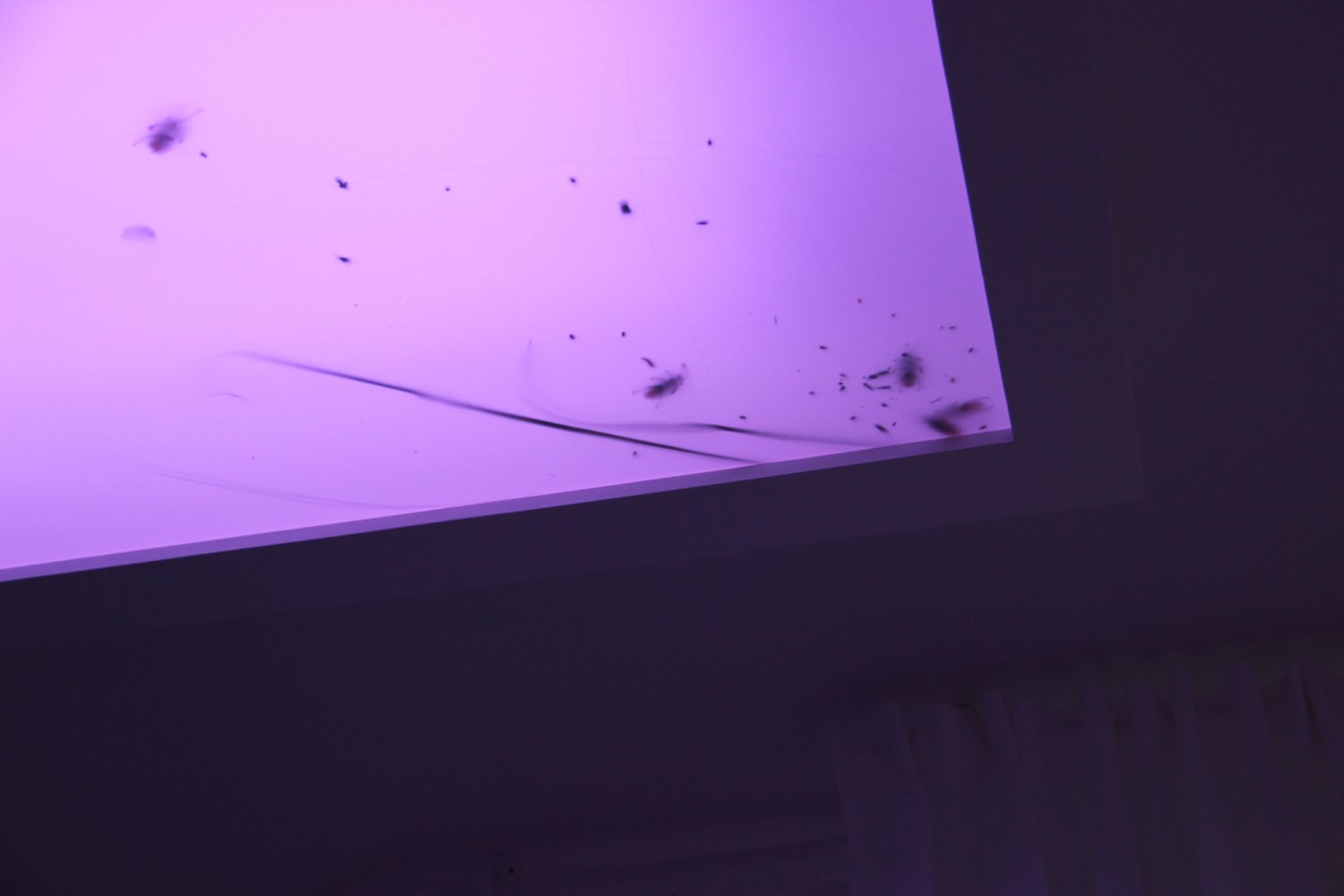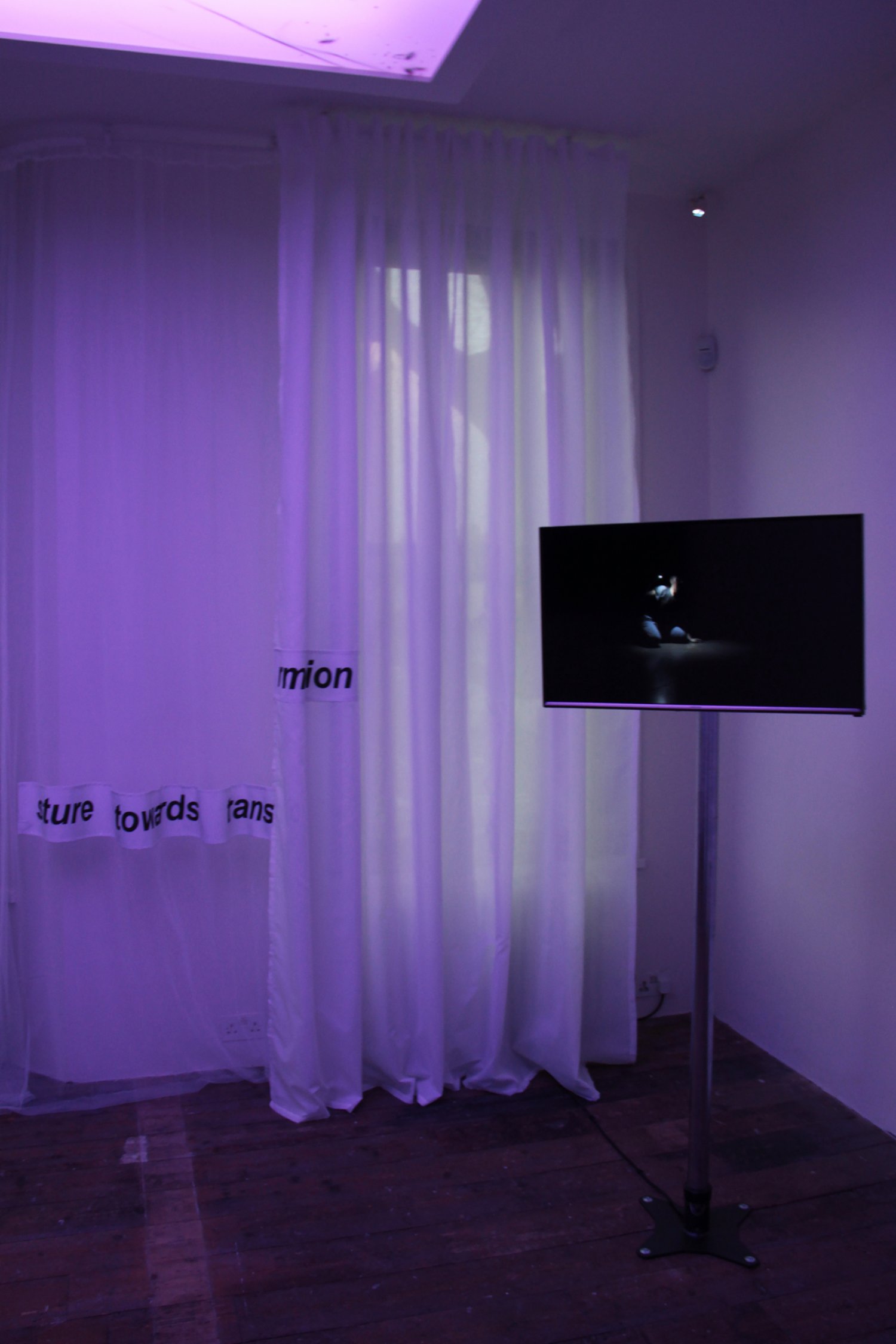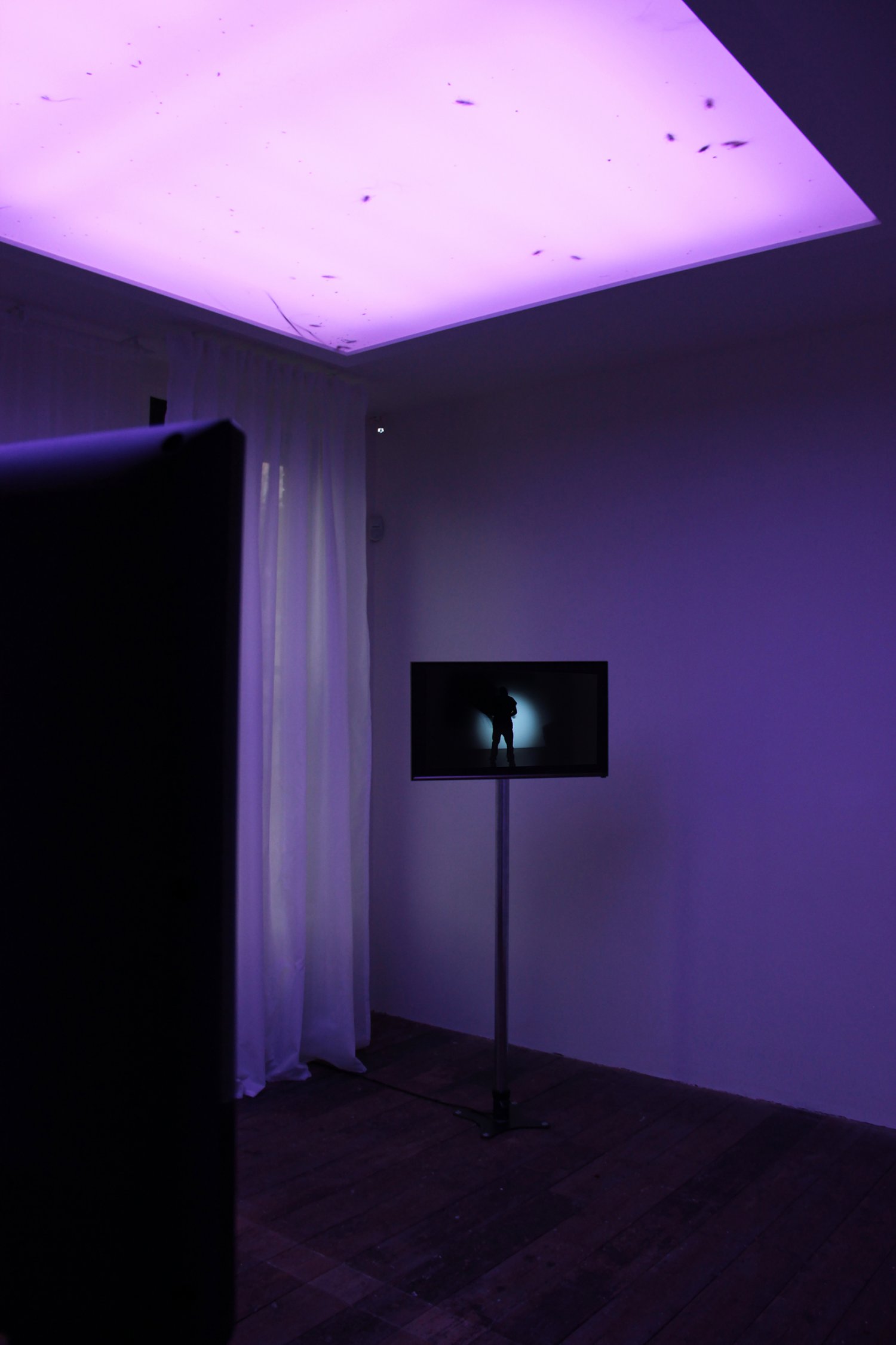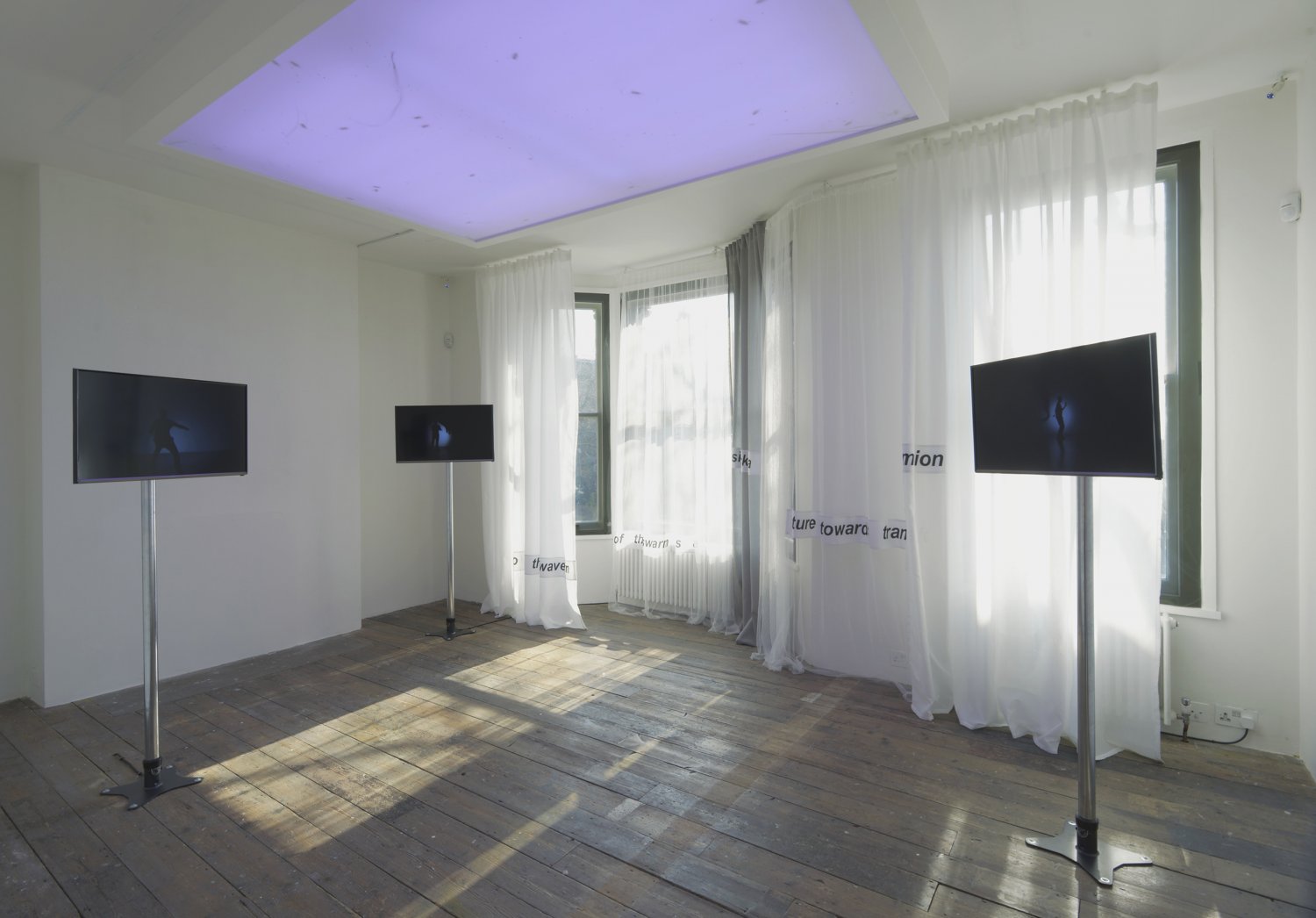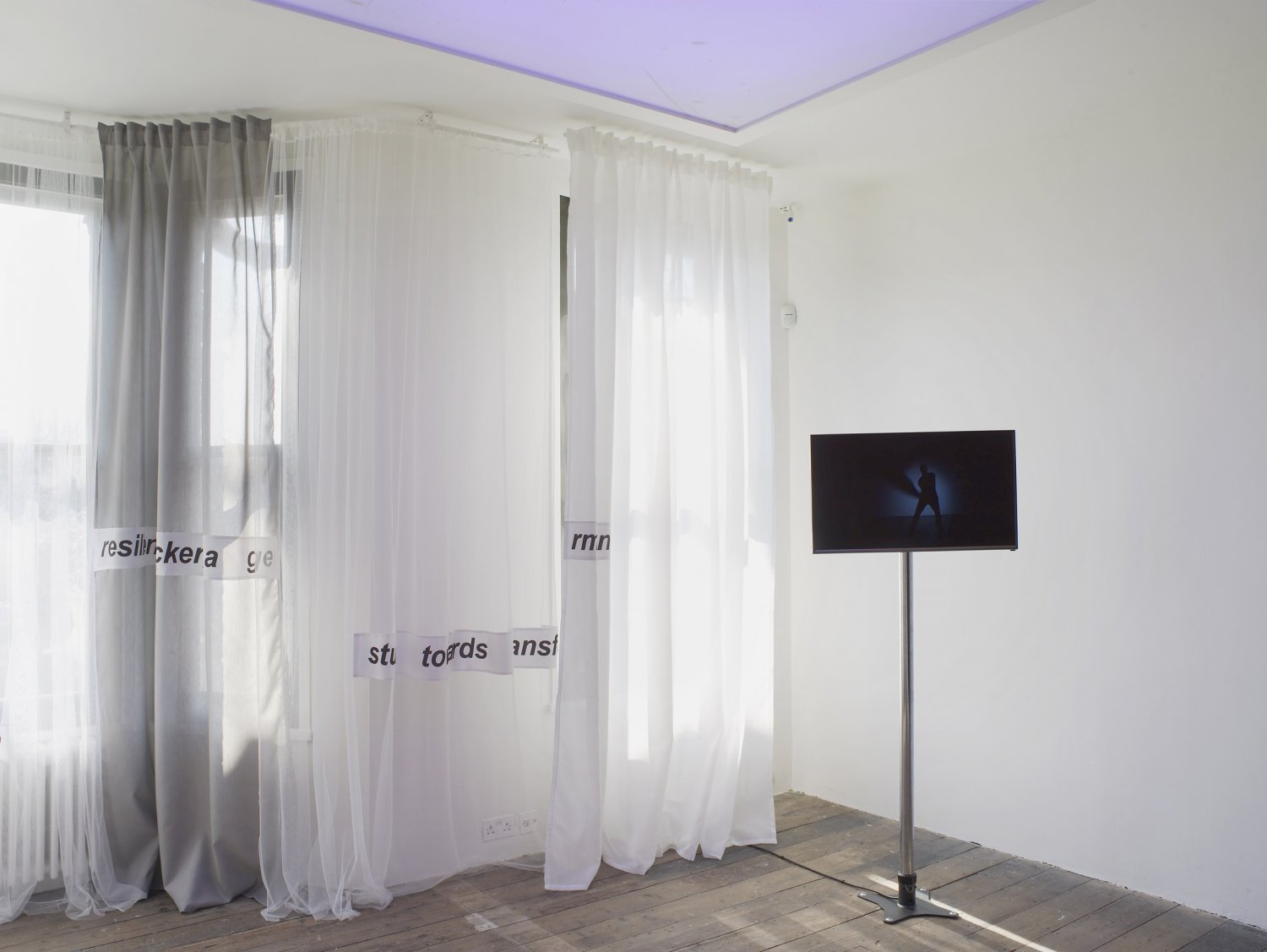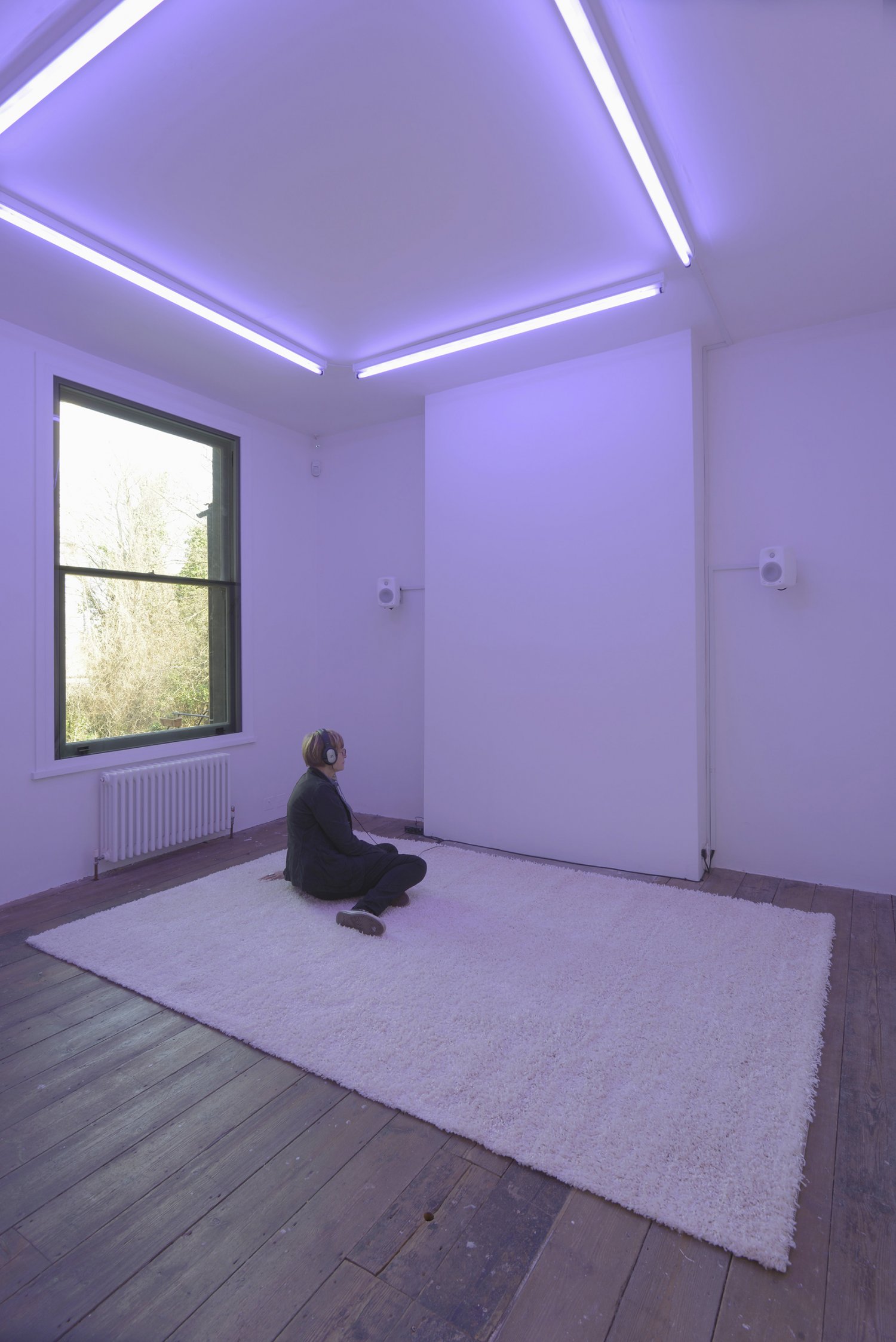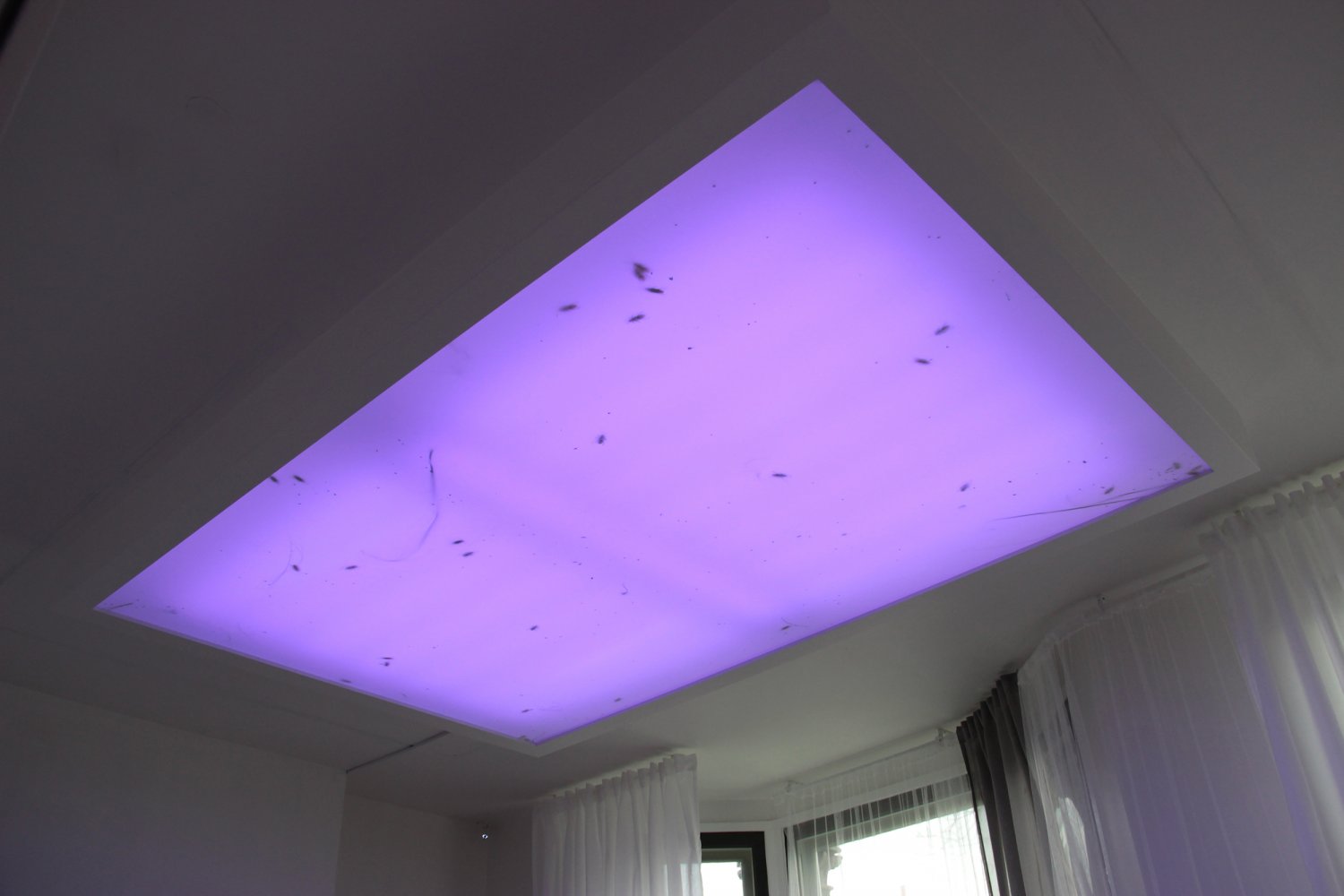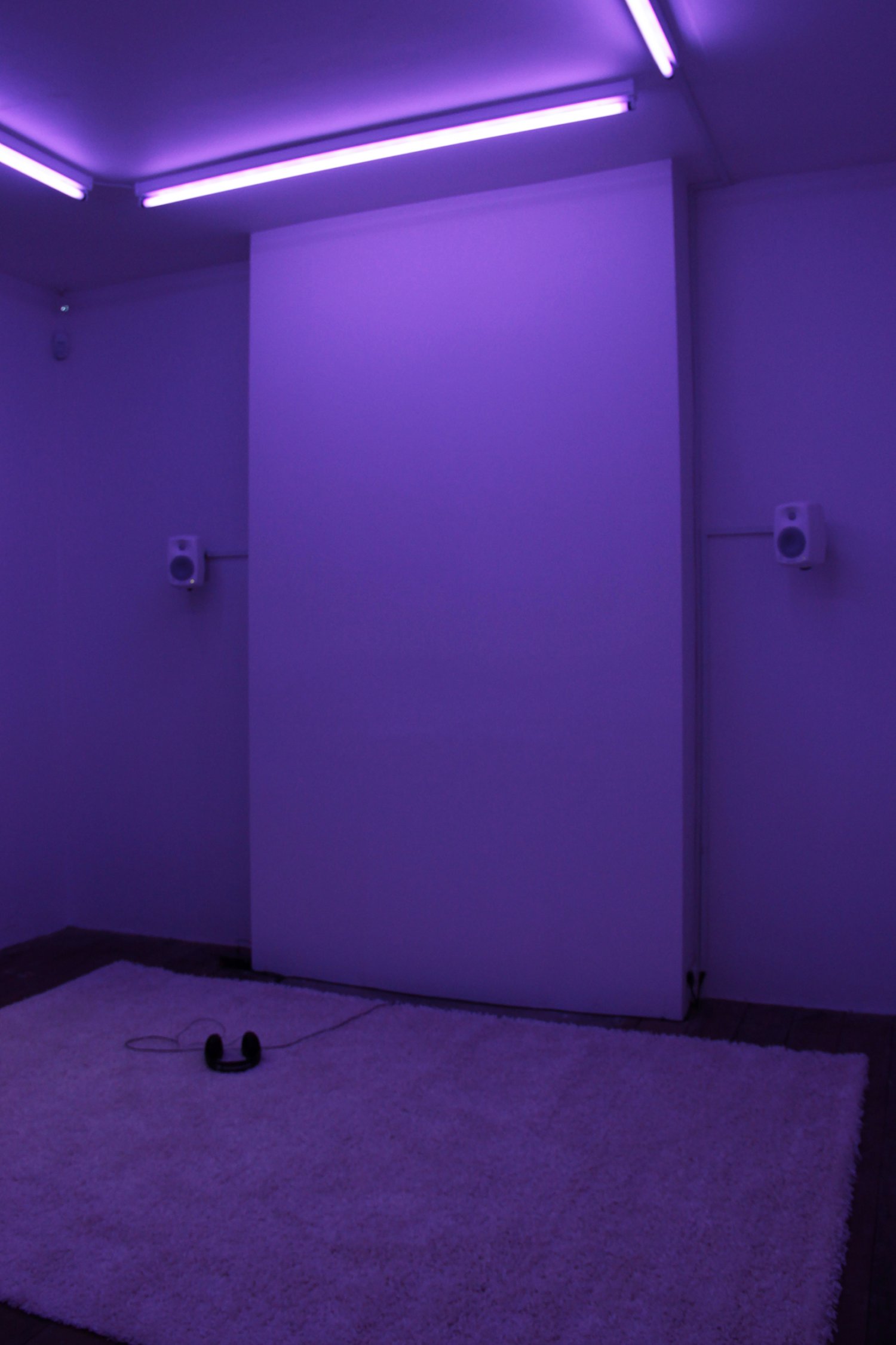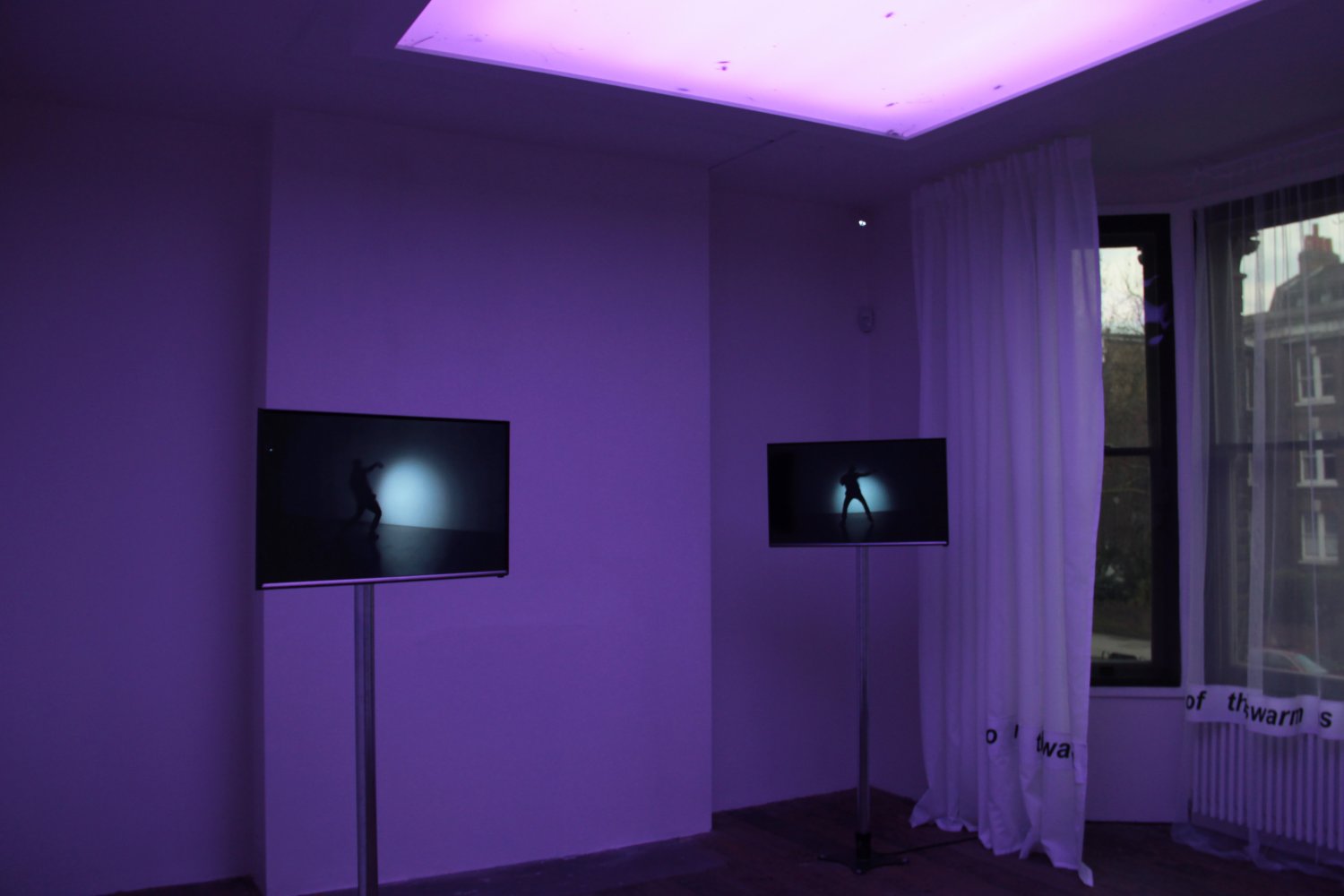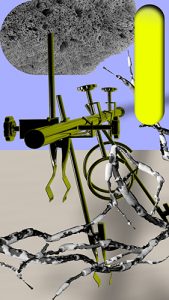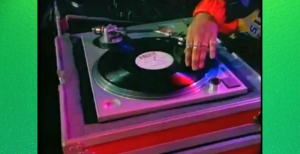Illuminated by a torch attached to his body, Paul Maheke creates a spotlight at South London Gallery. For his I Lost Track of the Swarm solo exhibition he appears on-screen, in the first of two rooms, where fragments of a dance sequence appear across three channels facing different directions. Running March 18 to May 22, the show is part of a series of events that marks the culmination of Maheke’s six-month Graduate residency (2015-16) at the Peckham space. Here he navigates his way through the liminal terrain of video with physical gestures drawing on hip hop —which he spoke about as part of ‘Beyond Beyonce‘ at Open School East last year —and subcultures of queer black identity like the Ballroom scene. The dance explores literal and metaphorical visibility, of bodies taking up space as political presence and resistance. The scanning spotlight suggests both the stage and the dance floor, and speaks of acts of collectivity and survival or of what the press release describes as “gestures of remembrance”, where movement is both expressive and transformative.
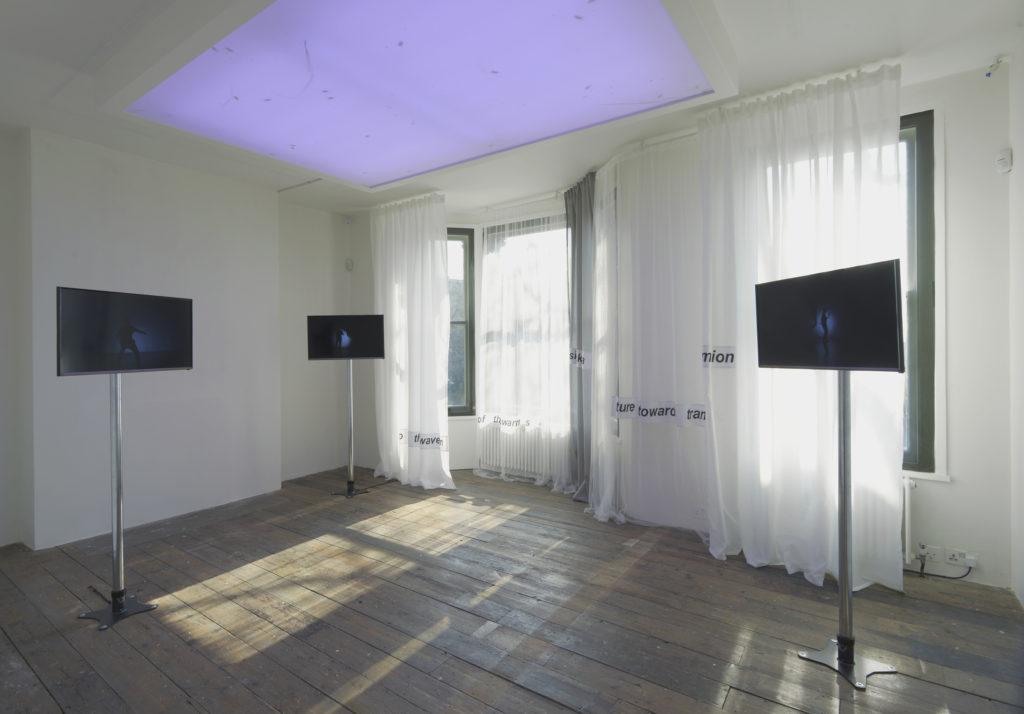
A lavender glow on the bottom edges of the screens draws the viewer’s eyes up to the light source which is a glowing ceiling tile and, despite the picturesque hue that saturates the space, inside it is what looks like dead cockroaches, clumps of hair and leaves, but the bugs are plastic and the hair synthetic. Maheke’s dance in the video runs in parallel to the semitransparent light box of objects overhead; in how lighting and music can turn a space into a place of gathering and affinity, the synthetic hair as a cosmetic extension and assertion of identity. Despite appearing dead, there is a more positive take on transmutation through the symbol of the cockroach as resilient, and as animals that move and communicate in groups. Sewn onto the curtains in the space are sections of text that run across them, and though they remain still, motion is suggested in their content: “to read the waverin’ of the swarm as a resilient flicker, a gesture towards transformation.”
The second room is also suffused with a lavender tint from four strips of UV lighting that make the white synthetic floor rug glow. We hear a 23-minute sound piece by producer Nkisi, mixing Congo’s Leele and West African club music, as footsteps emerge and distorted vocals repeat the phrase “dance towards transformation”. There are two alternative ways to listen, through two speakers on the wall or through two sets of headphones at a greater intensity, and it is a contradictory space of contemplation and activity as people sit down on the rug to hear more closely while the beat induces their bodies to movement. The carpet and headsets, along with the custom-made curtain rails and bare floorboards in the next room emphasise the domestic architecture of the exhibition space. A tension between dynamism and stasis permeates both rooms, between the moving body in the videos and the beat of its soundtrack, in contrast to the quietude, the calm of the the floor rug and the inanimate debris collected in the ceiling tile.

The animation of the gallery through light and music is undercut by discomfort, from looking up and seeing outlines of cockroachesm, and hair, and leaves, and dirt from the street suggesting different realities behind the facade. The weaves that can be found in nearby salons in South London Gallery’s surrounding neighbourhoods reference both local Afro-Caribbean communities, as well as those in France where Maheke was born and studied. In using cultural forms from Francophone Africa, including Nkisi’s musical references, the exhibition presents diaspora communities as acts and spaces of liberation.
Maheke’s I Lost Track of the Swarm looks at the production and articulation of subjectivity in relation to the collective or said ‘swarm’, and the use of bodily comportment in relation to self-expression and desire. Through the diffused purple lighting and materials, it explores what the accompanying text calls ‘black femme’ subjectivities within a wider exploration of the position of Black artists in the West, in the face of institutional racism, gentrification and cultural appropriation.**
